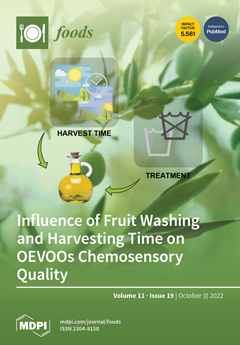A symbiotic or mixed animal husbandry (e.g., pigs and chickens) is considered to have a positive effect for animal welfare and sustainable agriculture. On the other hand, a risk of infection and transmission of microorganisms, especially of zoonotic pathogens, between animal species may
[...] Read more.
A symbiotic or mixed animal husbandry (e.g., pigs and chickens) is considered to have a positive effect for animal welfare and sustainable agriculture. On the other hand, a risk of infection and transmission of microorganisms, especially of zoonotic pathogens, between animal species may potentially occur and thus might increase the risk of foodborne illnesses for consumers. To prove these assumptions, two groups of animals and their environmental (soil) samples were investigated in this study. Animals were kept in a free-range system. In the first group, pigs and chickens were reared together (pasture 1), while the other group contained only pigs (pasture 2). During a one-year study, fecal swab samples of 240 pigs and 120 chickens, as well as 120 ground samples, were investigated for the presence of
Campylobacter spp.,
Salmonella spp. and
E. coli. Altogether, 438
E. coli and 201
Campylobacter spp. strains were isolated and identified by MALDI-TOF MS.
Salmonella spp. was not isolated from any of the sample types. The prevalences of
Campylobacter coli and
C. jejuni in pigs were 26.7% and 3.3% in pasture 1 and 30.0% and 6.7% in pasture 2, while the prevalences of
C. coli and
C. jejuni in chickens from pasture 1 were 9.2% and 78.3%, respectively. No correlation between the rearing type (mixed vs. pigs alone) and the prevalence of
Campylobacter spp. was observed. All swab samples were positive for
E. coli, while the average prevalences in soil samples were 78.3% and 51.7% in pasture 1 and 2, respectively. Results of similarity analysis of the MALDI-TOF MS spectra (for
C. coli,
C. jejuni and
E. coli) and FT-IR spectra (for
E. coli) of the same bacterial species showed no recognizable correlations, no matter if strains were isolated from chickens, pig or soil samples or isolated at different sampling periods. The results of the study indicate that the symbiotic husbandry of pigs and chickens neither results in an increased risk of a transmission of
Campylobacter spp. or
E. coli, nor in a risk of bacterial alteration, as shown by MALDI-TOF MS and FT-IR spectra. In conclusion, the benefits of keeping pigs and chickens together are not diminished by the possible transmission of pathogens.
Full article






